Cape Town is routinely declared one of the world’s most beautiful cities. And for good reason. The setting, tucked between the Atlantic Ocean and Table Mountain, is flat-out stunning. Mix in a healthy dose of history, including Nelson Mandela’s apartheid-era place of incarceration at Robben Island, and you have one worthy tourist destination. There’s plenty to do! So let’s not waste any time. Without further ado, the ‘Best of Cape Town’.
Table Mountain
Obviously.
Everyone who visits Cape Town has to check out Table Mountain. Over a million tourists annually make the trip up the city’s most famous peak, either on foot or by cable car. But unless you are out of shape or infirm, the cable car is a rather bland way to the top. If you are reasonably healthy, head up on foot. You can take the cable car down.
This is how I handled the city’s best outdoor destination.
6:45am — I am up early. Breakfast at the Backpackers Inn Greenpoint doesn’t go off until 7am, but I’m allowed to sneak in early.
7:38am — My Uber scoots through the rush hour traffic on the lower slopes of Table Mountain and drops me near the surprisingly busy lower cable car station. Service begins at 8am and plenty of visitors seem to have gotten the memo.
7:43am — Turns out this is not where I wanted to be. The Platteklip Gorge Trail is further up the road, well beyond this crowd. I’m here to walk and hike, so what’s another few kilometers? Off I go.
8:06am — October early mornings are sunny, but a bit chilly (45F/7C). The full sun on this exposed road is getting to be a bit much, so I duck off behind some trees and change into shorts.
Platteklip Gorge
8:12am — Here it is! The trail looks like it goes right up and disappears into a split in the giant rock that is Table Mountain. Platteklip Gorge isn’t the most technically difficult route to the summit. In fact it’s usually listed as the easiest. But that’s fine. I’m not looking for exposed cliffs, faint trails or remote territory today.
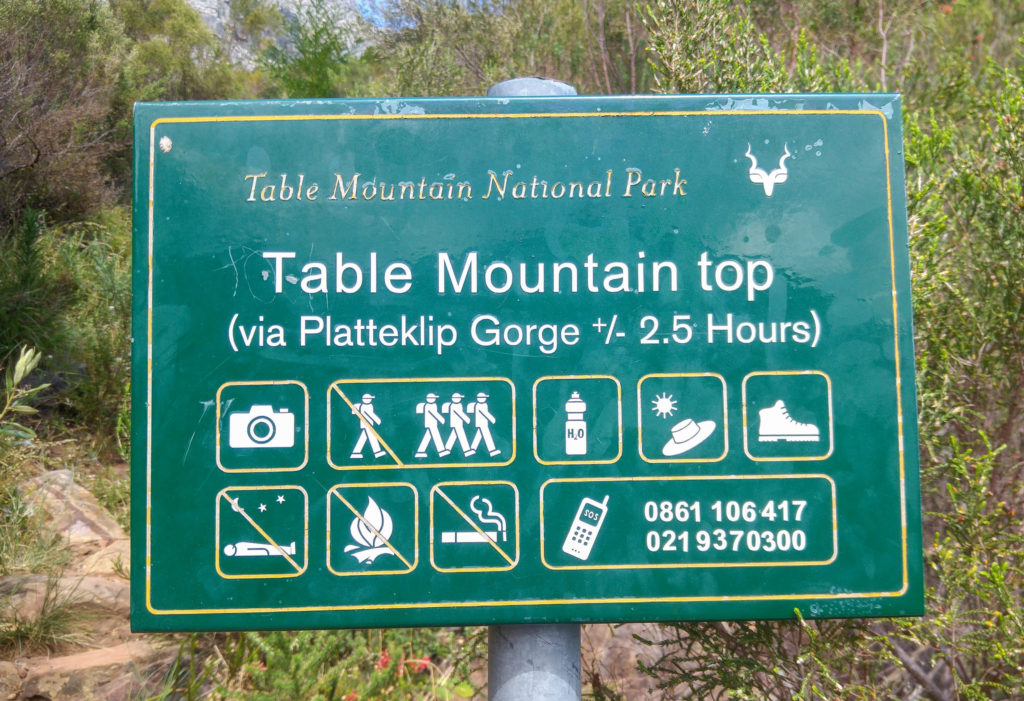
8:44am — Platteklip is a stairmaster hike. Eighteen hundred steps from trailhead to summit, one continuous slog, one step after another. Twenty-three hundred feet up over the course of two rather steep miles. You will feel it in your thighs tomorrow.
Lightweight down jacket off, suntan lotion on. Peculiar tan lines would indicate my application neither sufficient nor well executed.
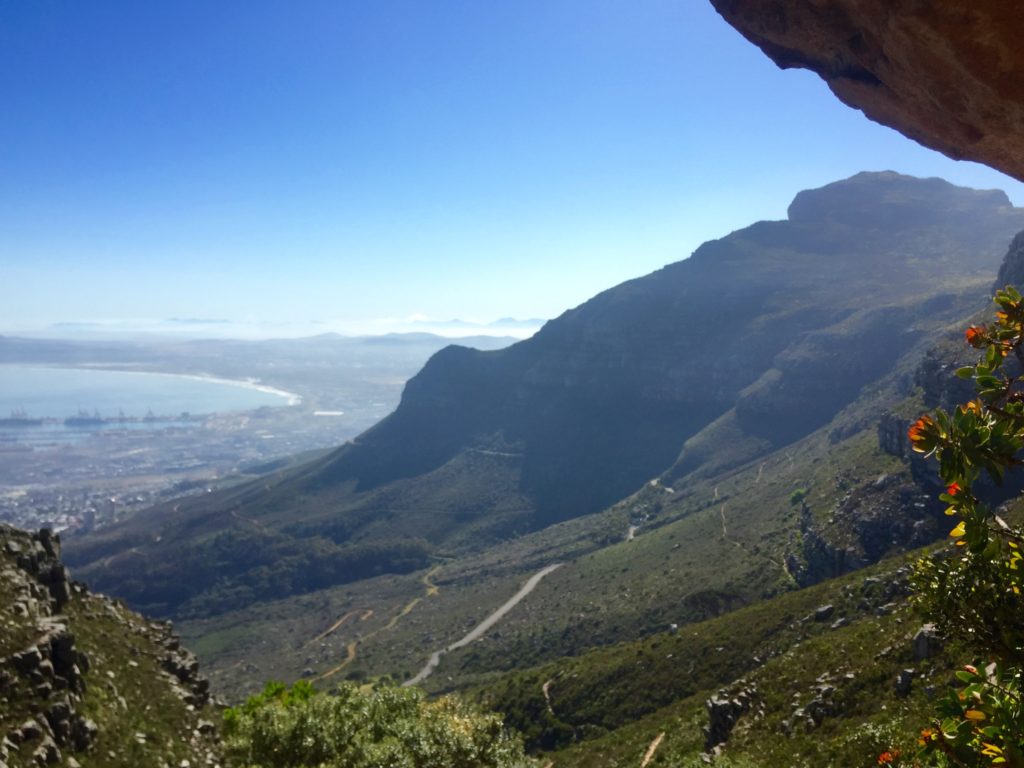
8:49am — Full exposure to the morning sunshine makes this route more or less pleasant than the others, depending on your perspective. It also means the views — which seem to improve by the second — are constant. Just turn around!
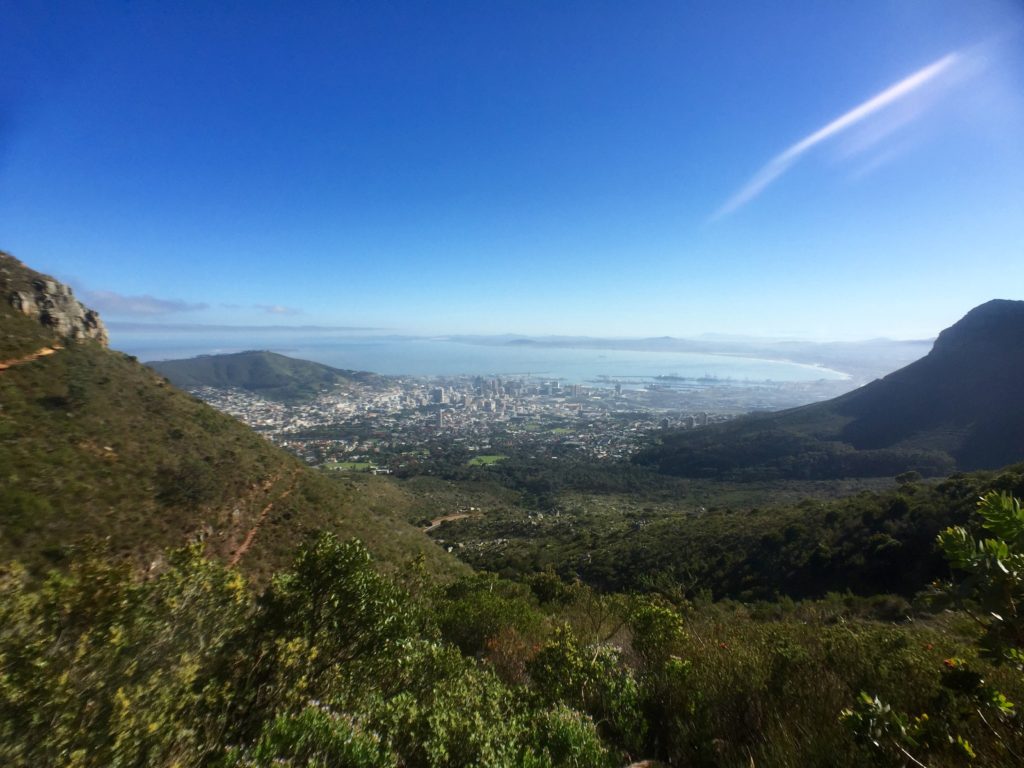
9:08am — An early weekday start means there are very few others on the trail. Success.
Next? How about a hike with armed guards through Kruger National Park?
9:41am — Strategically located large rocks offer tiny bits of shade, just enough for one slender individual to enjoy a drink and soak in the views.
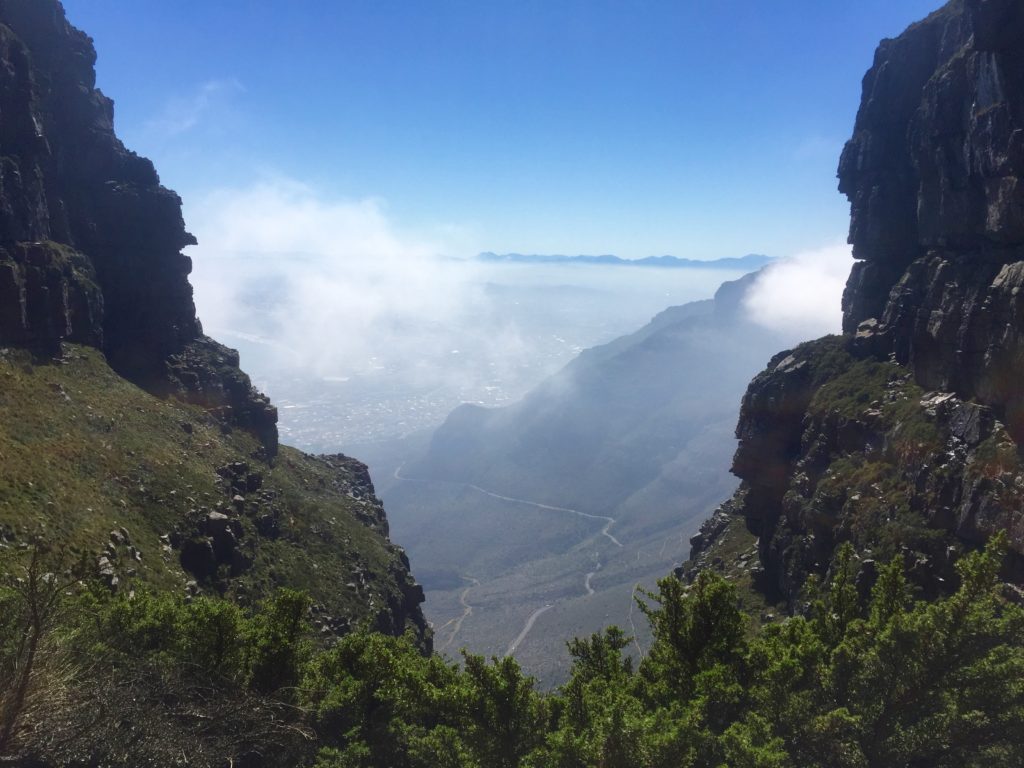
10:30am — The trail eases up as the path winds its way up the final stretch to the summit. It’s all a bit anticlimactic. This isn’t like a famous alpine peak where you’re very obviously at the summit. At Table Mountain you’re just kind of on top of a large, relatively flat rock.
Still, my endorphins are flowing.
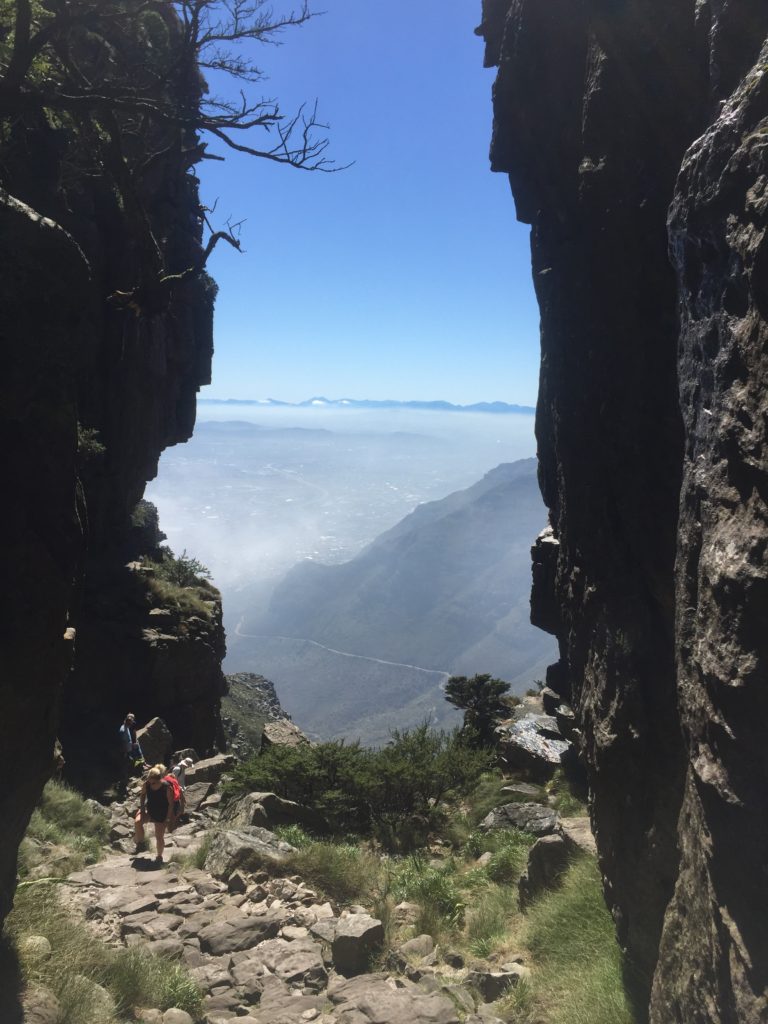
The Plateau
I glance to the right. Immediately, a hundred times as many people as I’ve seen in the past two hours.
School groups.
Women in heels. Gah!
I turn left.
11:15am — I find a spot on a smooth rock, far from the crowds, kick off my boots and lay back.
Table Mountain has a reputation for clear early mornings followed by afternoon clouds and today is no different. Fog rolls up the slopes and dissipates while clouds gather in the distance.

Table Mountain’s plateau is criss-crossed by the Summit Trail. Despite the easy nature of the trail, nearly all the visitors hang around the cable car station. Why people always do this, I have no idea.
But their loss is our gain.
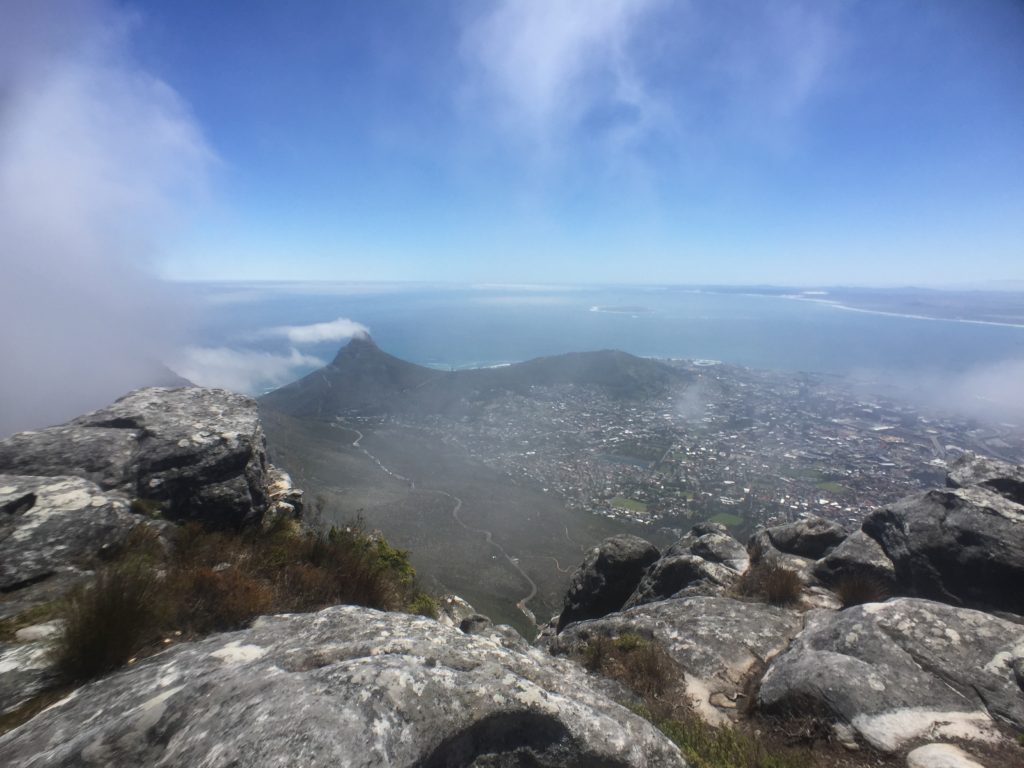
I walked around the entire top and barely encountered another human being. Perhaps ten in all.
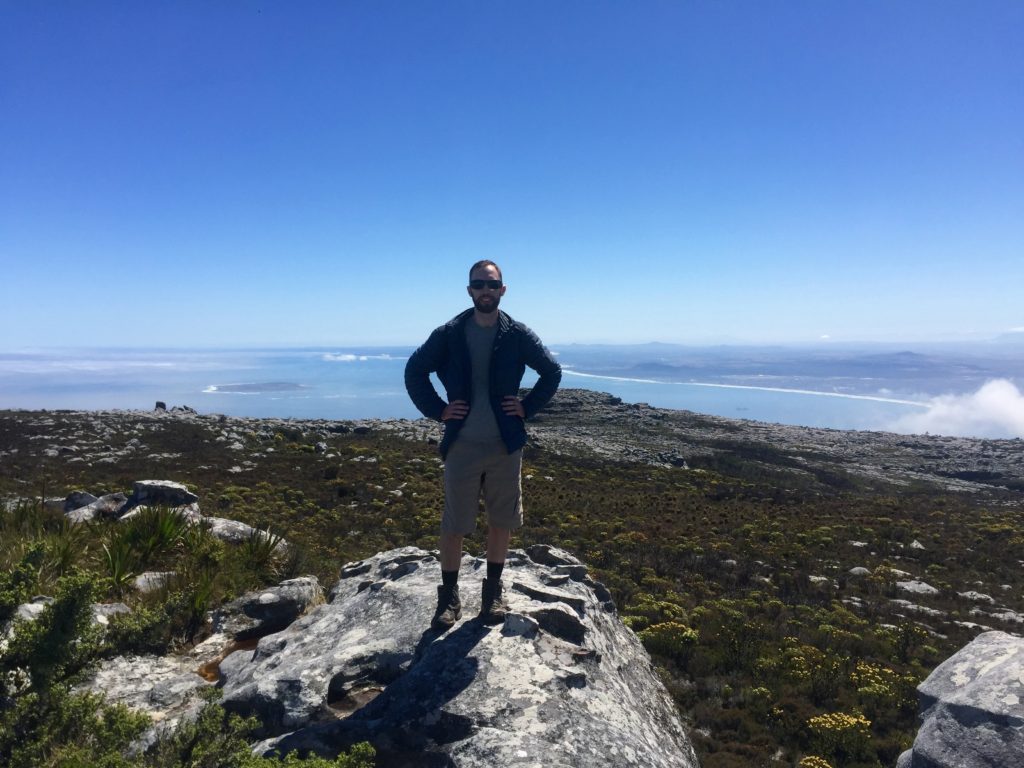
Sure, I’ll take the place to myself!
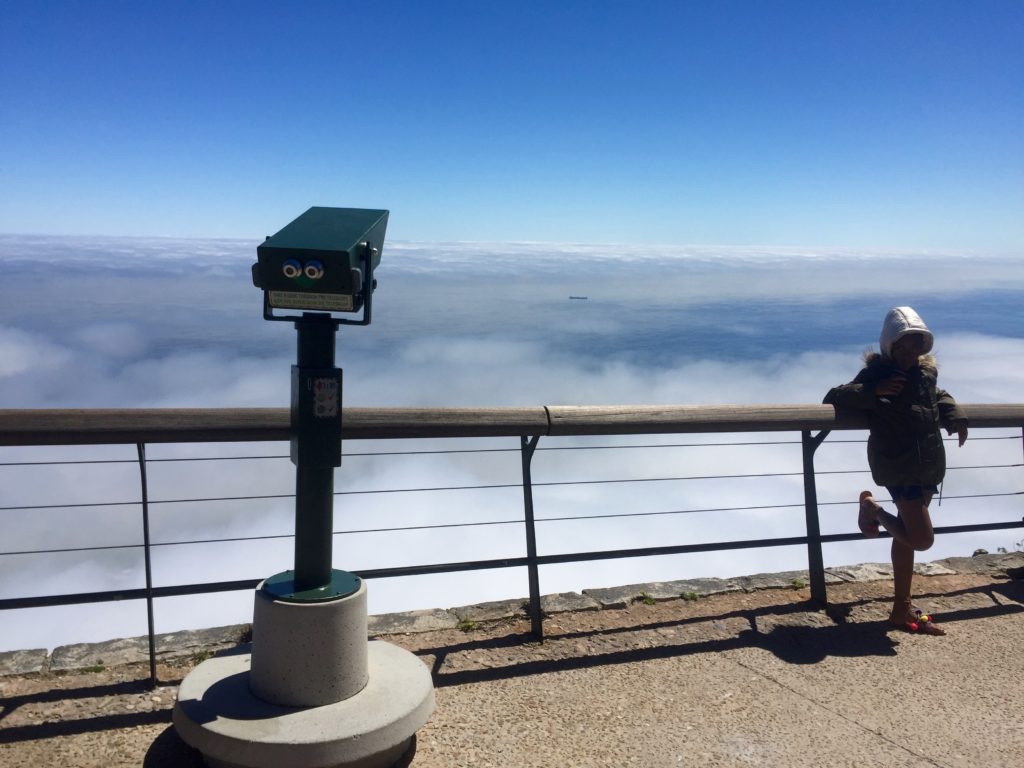
1:30pm — Queue up for a ticket, stand in line and catch the cable car down. Total damage; 2700′ of elevation change, 16,000 steps and 7 miles (11km).
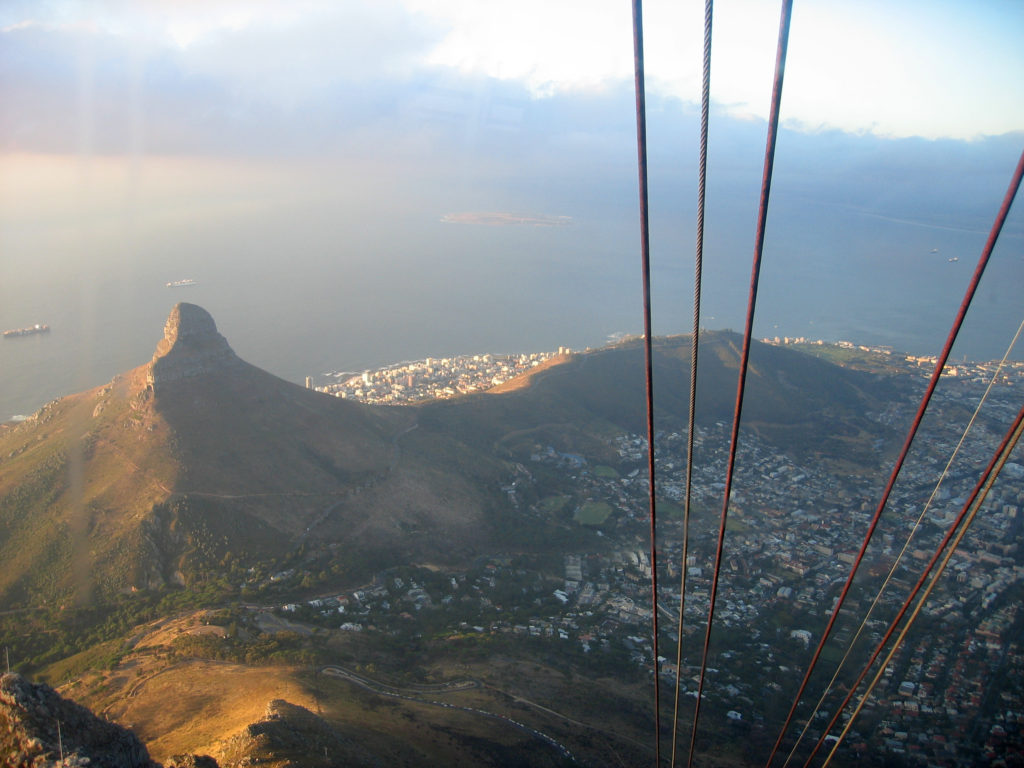
FOOD LOVERS
After five hours of hiking up and around Table Mountain my stomach is grumbling.
I wander around downtown for a bit before stumbling upon the Food Lovers Market. It turned out to be just what I was looking for. Salad bar, pizza, healthy food, desserts. Perfect for a rather gluttonous post-hike meal.
I go big. Two large slices of spicy chicken and pineapple pizza, huge salad from the bar plus one for takeaway dinner AND the particularly mouth-watering three-for-25 Rand pastry deal — US$11.
After devouring my food a woman with two children comes around begging for money. Despite her best efforts, Mom doesn’t seem to have any luck with the mostly businessperson crowd. I don’t like to give cash handouts to the less fortunate, but am otherwise happy to help.
When they come to my table I’m ready — I ask if they’re hungry. Mom nods and says yes as her 8 or 9-year old daughter’s eyes brighten.
I tell them to follow me.
Pizza for Three
It was obvious this woman could not shop here. They probably lived in one of the disturbing number of corrugated metal and wood shanty towns on the outskirts of South Africa’s most touristed city.
I ask if they would like some pizza.
Nods all around.
And so we walked to the counter. Mom and daughter each chose a slice. The friendly attendant slipped the boards into the oven while I chatted with my new friends. I asked their names and shook the little girl’s hand.
Pizza takeaway boxes in hand, we stop off to grab drinks. The three of us walk to the check out lane together.
I swipe my card; total damage about US$5.
We shake hands as I wish them well. Mom says God will bless me.
I walk into the afternoon sunshine, endorphins flowing, enthusiastic on Cape Town and life in general.
ROBBEN ISLAND
Like most visitors, I knew the basics of Nelson Mandela’s life and his leading role in the fight for racial equality in South Africa. But before my trip I made it a point to watch Mandela: Long Walk to Freedom. I highly recommend it. It adds context and offers a nice knowledge base prior to visiting Robben Island.
Once on the island, the tour can feel rather rushed. Hop in a bus, stop at the quarry, take some pictures, get back in the bus. Repeat a couple of times.
And don’t let my pictures fool you. Robben Island is busy.
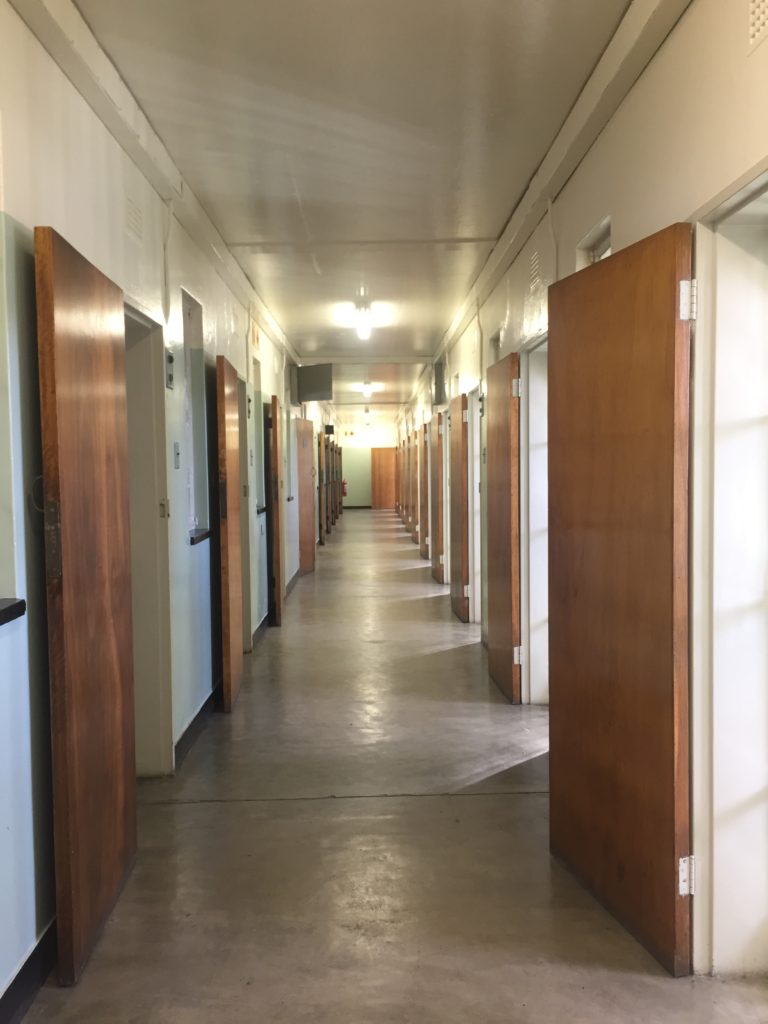
One of the highlights was being guided through the maximum security cell block by a former prisoner. This area was reserved for those the apartheid-era government of South Africa deemed the most troublesome prisoners, those leading the fight for racial equality.
The gentlemen in this block slept on the floor, went to the toilet in buckets and were restricted to one 30-minute visit per year. They carried out hard labor in the island’s rock quarry and suffered terrible eye and respiratory issues.
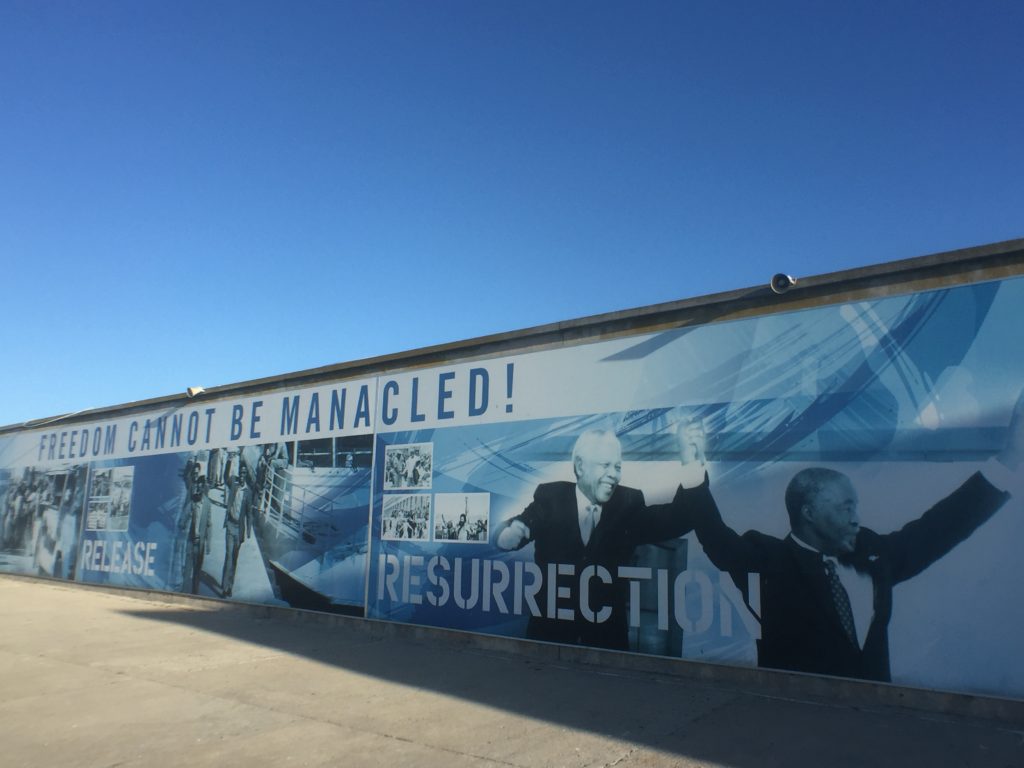
Mandela was obviously the most famous convict at Robben Island, though he was hardly alone. Future president Jacob Zuma also spent time here, along with nearly three thousand others.
Mandela spent 18 years of his life on this maximum security rock. It’s tough to imagine being imprisoned here, within sight of Cape Town.
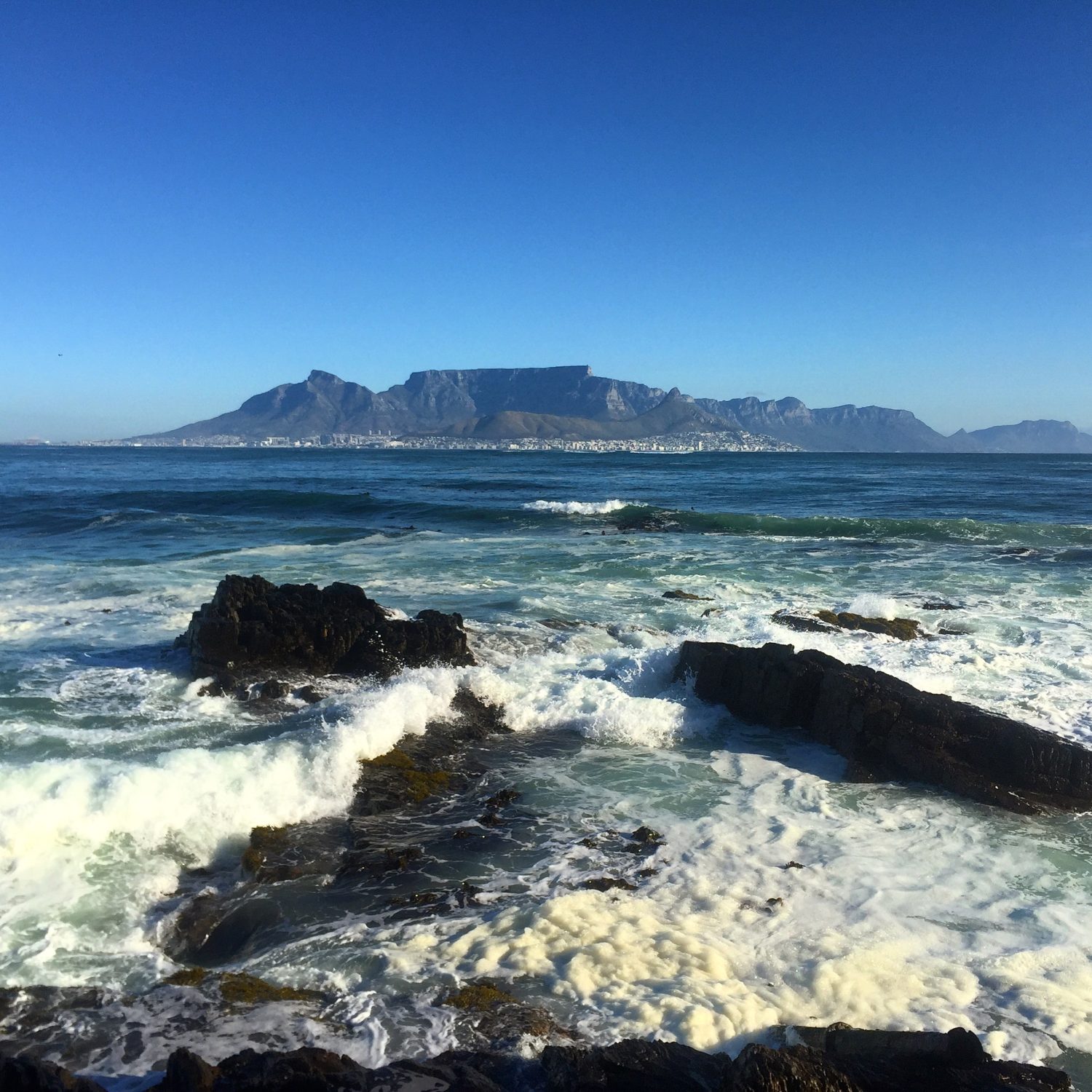
The whole Robben Island experience could be rather moving, although the way tours are currently conducted makes it feel more like an assembly line.
THE REST OF CAPE TOWN
I thought so highly of my evening at Mzansi that I devoted a full post to it. For me, it ranks right alongside Table Mountain and Robben Island as true Cape Town must-do’s. Don’t miss it!
The V&A Waterfront is classified as a tourist attraction, but with Table Mountain, Robben Island and South African township culture in competition for your time, I would hardly rank it with the best of Cape Town.
So what exactly is the Victoria & Albert Waterfront?
A few hundred shops, about eighty restaurants, a theater, an aquarium (ugh) and this, the Cape Wheel.
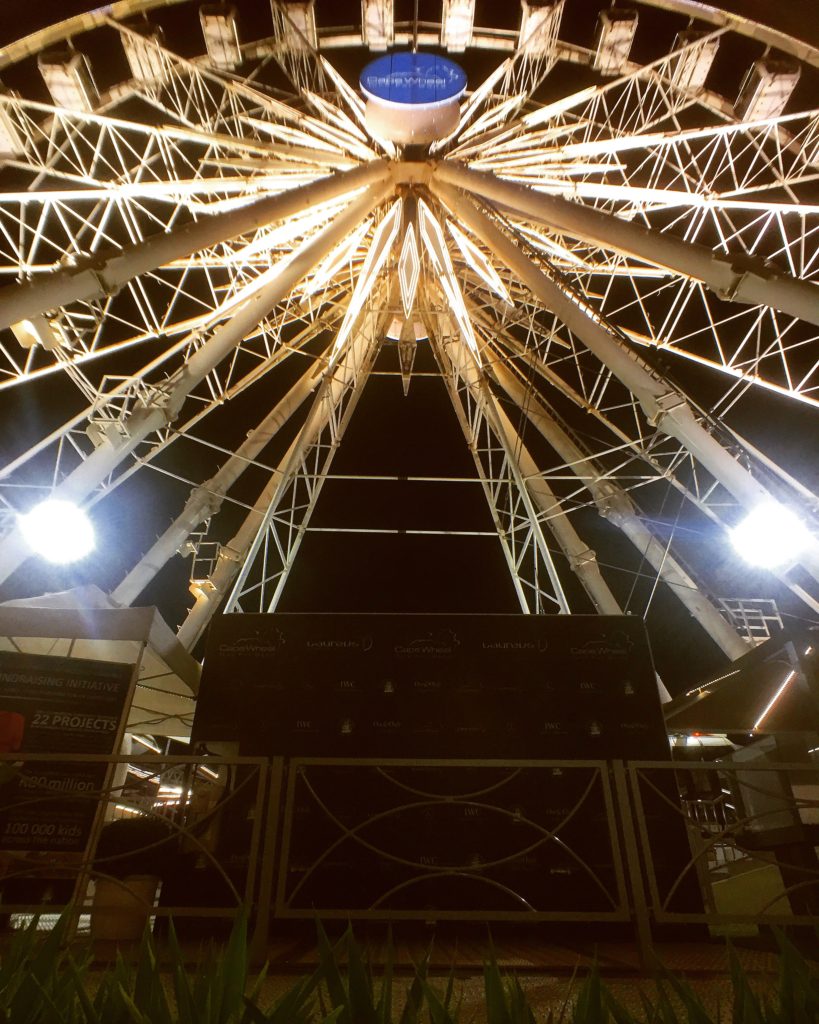
The waterside setting is lovely. But it’s hardly a tourist destination. A nice dinner and an evening stroll here are a perfect way to wrap a busy day partaking in Cape Town’s actual attractions.
Bo-Kaap — literally “above the Cape in Afrikaans — is a brightly colored neighborhood formerly known as the Malay Quarter. The area was originally home to imported slaves from — you guessed it — Malaysia (among other places).
With the abolishment of slavery, the freed slaves painted their formerly white homes all manner of colors. The tradition of bright Bo-Kaap continues today.
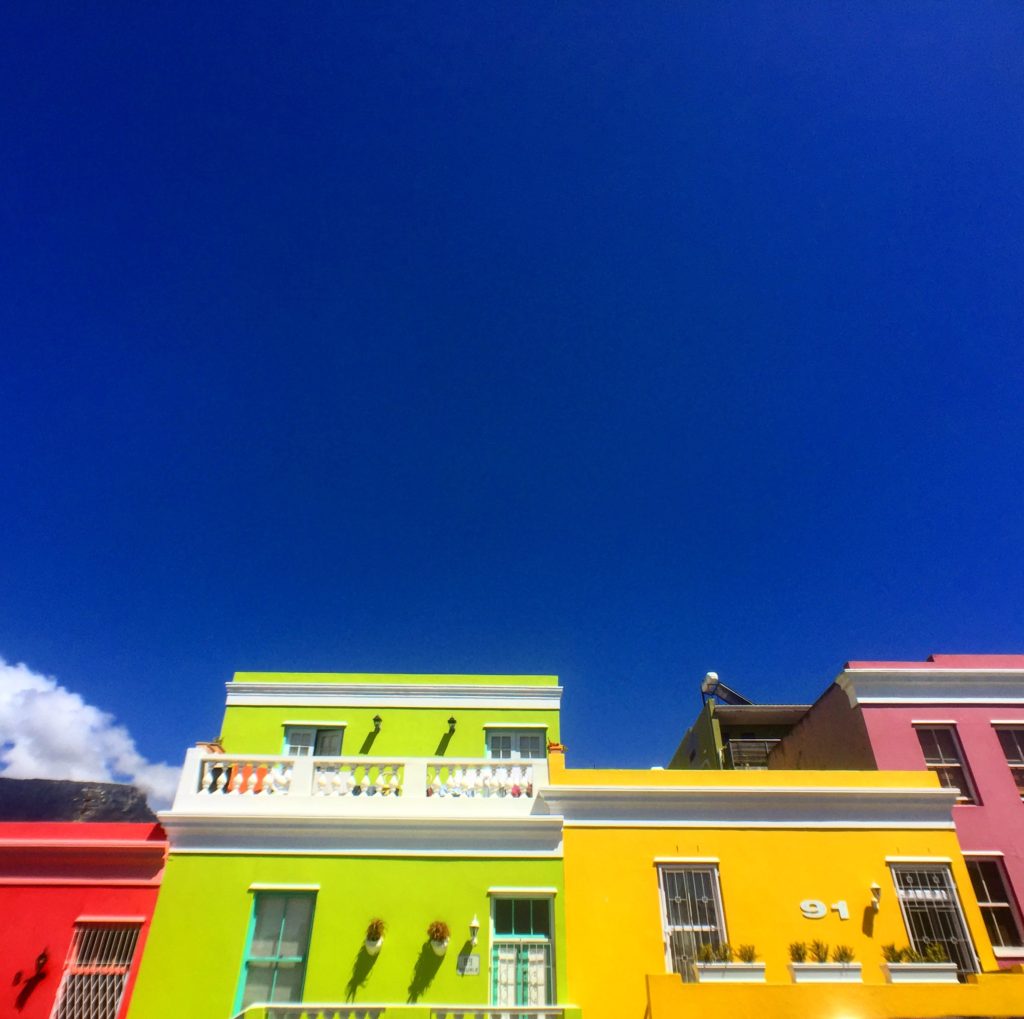
The areas south of Cape Town proper, including the Cape Peninsula and the Cape of Good Hope, are well worth a full day car rental exploration. But that will have to wait for another post.
DO IT YOURSELF
Table Mountain
Hiking the mountain is free.
But that’s where the simplicity ends. There are a number of options for hiking to the plateau.
My route, Platteklip Gorge, is relatively straightforward. You won’t be alone, but you probably won’t die either. But accidents happen. It’s the most popular trail to the summit. I loved it on a weekday morning, but 10am on a Saturday? Possibly not so much.
India Venster is another popular route, but involves some scrambling and exposed ledges. It scales the mountain right below the cable car. Skeleton Gorge offers a different experience. Mostly shaded with streams, boulders and plenty of greenery.
Don’t underestimate any of these hikes. Two thousand feet up, blazing sunshine, iffy footing, big drop offs. People die on Table Mountain. Regularly.
My best advice? A few homemade YouTube videos allowed me to visualize the conditions of each route. That’s a good place to start.
Bring water and a snack and prepare for rapid weather changes. Don’t bank on internet or mobile coverage the entire way. Plan accordingly. If you’re hiking solo, tell someone your plans.
Table Mountain’s Aerial Cableway hours vary based on the season. Generally the first car up is 8am in summer (Nov-Apr), 830am in winter (May-Oct). Last car down varies between 6pm and 930pm. One-way tickets cost R150 (US$13); round trips R275/290 (US$24/25). All sorts of discounts are on offer. Lines can be altogether crazy. Buy your tickets in advance.
Food Lovers Market
An unexpected, pleasant surprise in the Central Business District. Imagine a cross between an upscale grocer, a bakery and a sit down food court. Sushi, healthy salads, pizza and pastries on offer. It’s perfect for a casual meal or takeaway.
Robben Island
Visits to Robben Island include round trip transportation to the island via a variety of boats, a bus trip around the island and a short walking tour. The walking portion is led by a former prisoner. Tickets are on sale here. Tours regularly sell out in advance, so don’t wait until the last minute.
Adult tickets cost R360 (US$25) while under-18’s travel for R200 (US$13.80). Trips last about 4 hours and operate daily at 9:00, 11:00, 13:00 and, sometimes, 15:00.
This is not the most organized or thoughtfully done tour I’ve been on, but it’s Robben Island. You can’t skip it.
The ferry trips back and forth can be quite rough. Seasick tablets are a decent idea. Oh, one of the ferries nearly sank back in 2017. Enjoy!
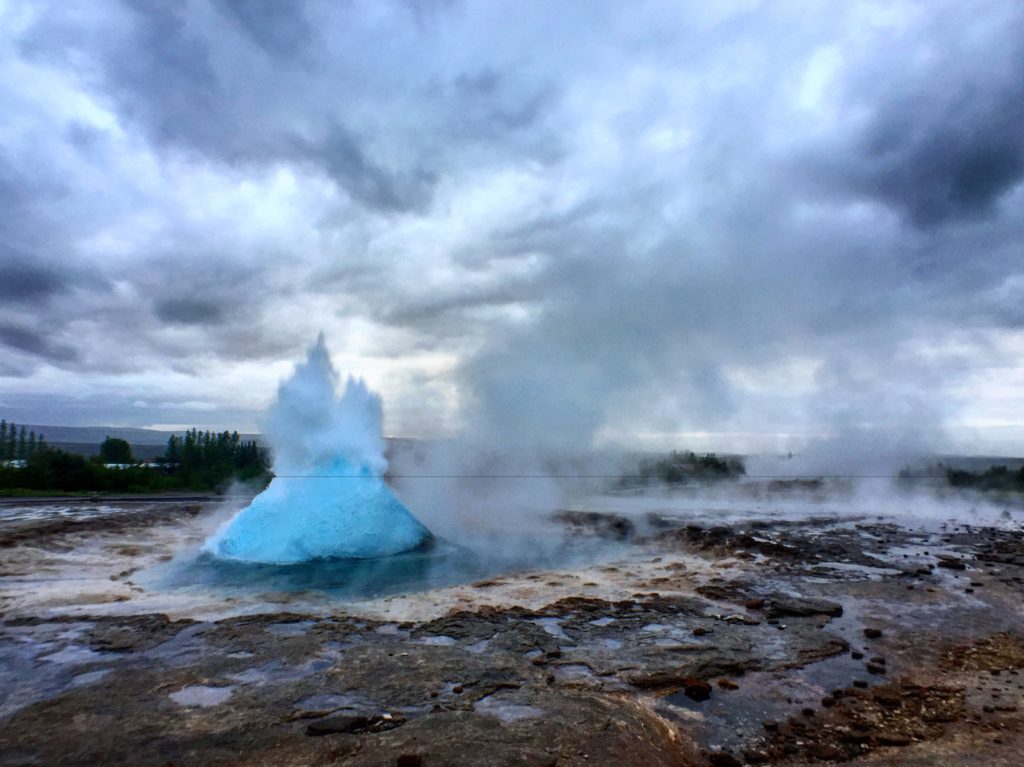
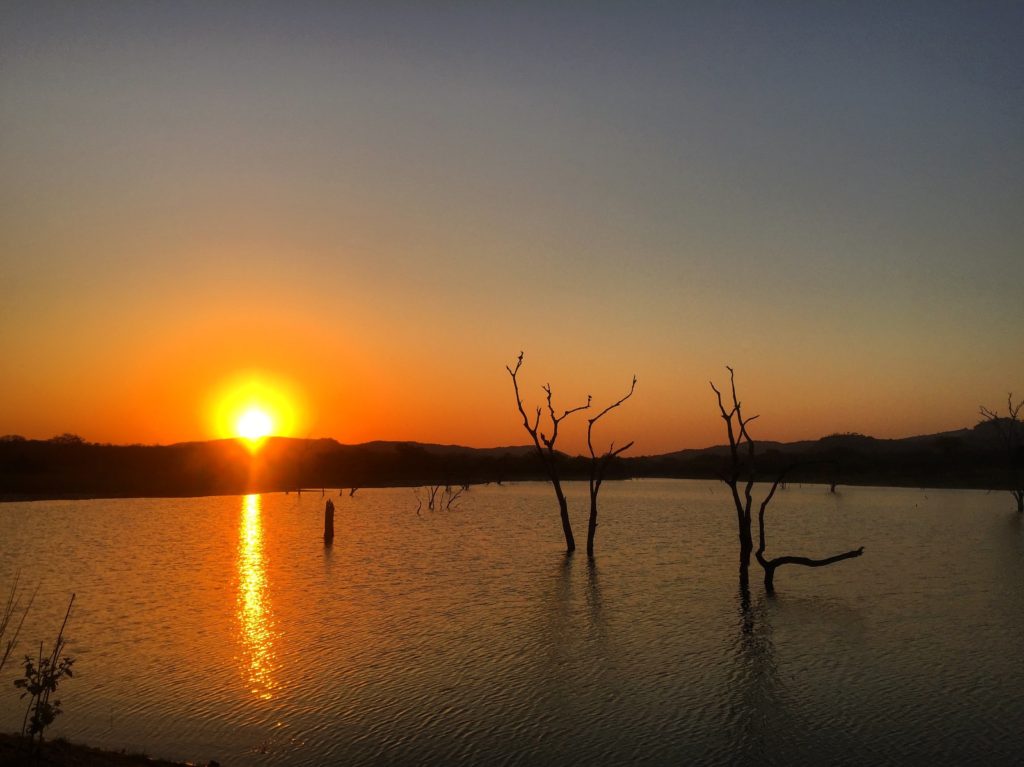
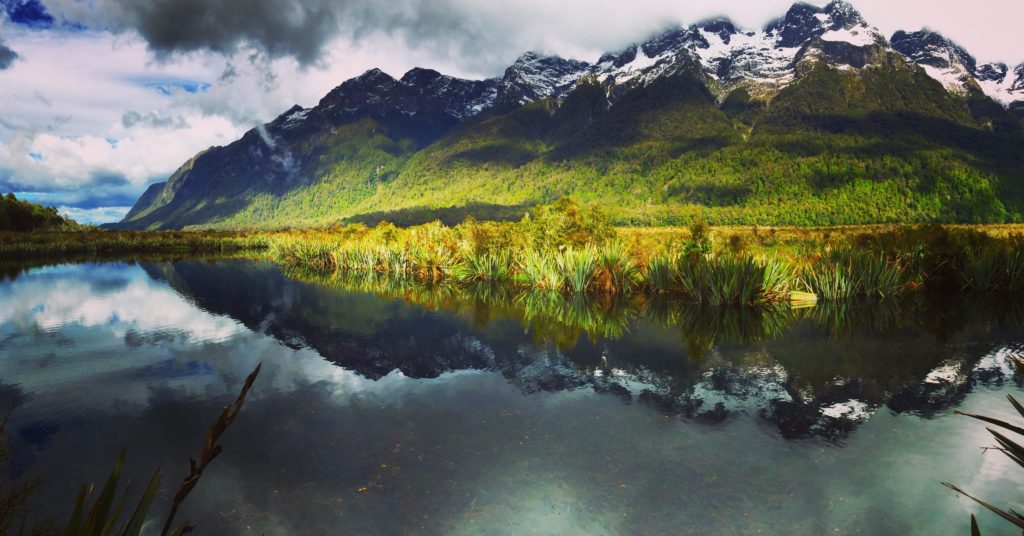
Pingback: Mzansi Restaurant | Cape Town | South Africa | No Guidebooks
Another fantastic blog… we never made it to Cape Town which is a shame – maybe next time!
Thanks, Peta
Too many places, not enough life! But it’s not going anywhere…